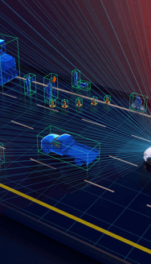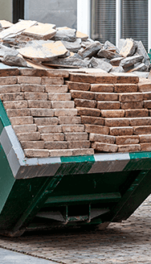Accelerometers: measuring acceleration and vibrations
The system is free of noise, and no better solution has been devised thus far that is able sense the small vibrations of an earthquake. An incredibly stable mechanical concept of this type is also a viable method for measuring vibrations in a building over a longer period of time.
Read more...MEMS: Small embedded systems
The vast majority of modern accelerometers are small embedded systems, or microelectromechanical systems (MEMS) to be more precise. An airbag, for example, contains a small chip that senses sudden negative acceleration in the event of a collision. The controller of a Nintendo WII also contains a solid-state accelerometer that records the gamer’s movements.
Different MEMS rely on a wide range of technology. Piezoresistive accelerometers are the commonest. These components exploit a property of piezo crystals, namely the change in resistance when subjected to mechanical stress. The internal structure can be designed to use this property to detect an acceleration. These sensor chips are fast and relatively cheap.
Capacitive MEMS sensor
Another option is a capacitive MEMS sensor. It contains tiny, intersecting combs. This creates a capacitor, whose capacity depends on the distance between the teeth. As the chip accelerates, one comb moves relative to the other. The changing capacitance is therefore a measure of the acceleration. This type of accelerometer is very sensitive, accurate, and insensitive to temperature changes.
Inductive and piezoelectric MEMS accelerometers are also available. You can also choose how many directions you want to measure acceleration or vibration in.
Shock-resistant thermal accelerometer
One potential disadvantage of all MEMS sensors is that they contain a mechanical system, meaning that they can break in the event of an extremely large shock. If high shock resistance is a requirement in your application, a thermal accelerometer might be a better solution.
This kind of component consists of a dome with a heating element and a temperature sensor inside. The heating element heats the liquid in the dome. The resulting thermal bubble acts as a reference. During acceleration, the cold, higher-density fluid pushes away that heated bubble. The built-in sensor signals the temperature change, which can be used to calculate the acceleration.
Featured accelerometers
Need some help?
Our brand-independent sensor database only lists a selection of the sensors available. There are so many different technologies and manufacturers that our online sensor database can never be 100% complete. If you can’t find what you’re looking for, or you have a question, send an e-mail to our sensor experts. We’ll gladly help you with your search.






